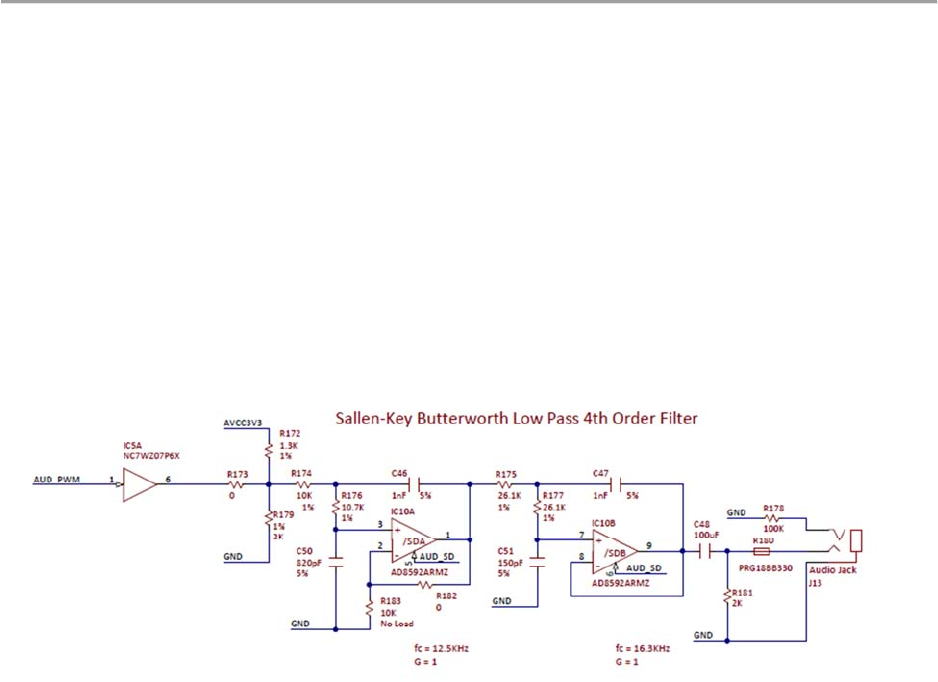User manual

12.1 Tri-Color LEDs
The Arty Z7 board contains two tri-color LEDs. Each tri-color LED has three input signals that
drive the cathodes of three smaller internal LEDs: one red, one blue, and one green. Driving the
signal corresponding to one of these colors high will illuminate the internal LED. The input
signals are driven by the Zynq PL through a transistor, which inverts the signals. Therefore, to
light up the tri-color LED, the corresponding signals need to be driven high. The tri-color LED
will emit a color dependent on the combination of internal LEDs that are currently being
illuminated. For example, if the red and blue signals are driven high and green is driven low, the
tri-color LED will emit a purple color.
Digilent strongly recommends the use of pulse-width modulation (PWM) when driving the tri-
color LEDs. Driving any of the inputs to a steady logic ‘1’ will result in the LED being
illuminated at an uncomfortably bright level. You can avoid this by ensuring that none of the tri-
color signals are driven with more than a 50% duty cycle. Using PWM also greatly expands the
potential color palette of the tri-color led. Individually adjusting the duty cycle of each color
between 50% and 0% causes the different colors to be illuminated at different intensities,
allowing virtually any color to be displayed.
13 Mono Audio Output
The on-board audio jack (J13) is driven by a Sallen-Key Butterworth Low-pass 4th Order Filter
that provides mono audio output. The circuit of the low-pass filter is shown in Figure 14.1. The
input of the filter (AUD_PWM) is connected to the Zynq PL pin R18. A digital input will
typically be a pulse-width modulated (PWM) or pulse density modulated (PDM) open-drain
signal produced by the FPGA. The signal needs to be driven low for logic ‘0’ and left in high-
impedance for logic ‘1’. An on-board pull-up resistor to a clean analog 3.3V rail will establish
the proper voltage for logic ‘1’. The low-pass filter on the input will act as a reconstruction filter
to convert the pulse-width modulated digital signal into an analog voltage on the audio jack
output.
Figure 13.1. Audio Output Circuit.










